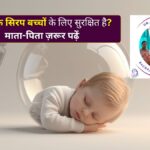Seasonal variations and environmental infections can cause viral fever, a severe viral sickness as per the Best Child Specialist. The most common symptom for most people is an increase in body temperature on average. During the monsoon season, people of all ages are vulnerable. A person’s fever increases over normal when they are infected with the virus.
Stuffy nose, coughing, nausea, exhaustion, and generalised aches and pains are a few potential side effects. The majority of viral diseases can be successfully treated with time and over-the-counter (OTC) drugs like cold compresses. A high body temperature, however, can necessitate medical intervention.
Causes of Viral Fever – Best Child Specialist
The Best Child Specialist says that fever happens when the immune system recognizes and combats invasive pathogens. The immune system automatically responds by attempting to neutralize the threat when dangerous organisms like viruses or bacteria penetrate the body.
When anything like this occurs, the body’s temperature soars. Viruses typically spread from:
- Inhalation of contaminated air droplets:
An infected individual can spread the infection to those nearby when they cough, sneeze or speak casually while not covering their face. It can cause an infection if inhaled.
- Consumption of contaminated food
One of the main ways that infectious diseases spread is through contaminated food. Eating contaminated food puts you at risk of getting sick from a virus.
- Insect bites:
Only two of the several ailments spread by mosquitoes that reach their height during the monsoon season are malaria and dengue fever. Additionally, viruses that cause fever can be spread through mosquito bites.
When the exact cause of a fever is uncertain, the condition is known as pyrexia (unknown fever).
Although both bacterial and viral fevers can be quite uncomfortable depending on a number of factors, the main distinction between the two is that, in contrast to viral fever, which usually goes away within two weeks, bacterial fever can last for up to 14 days.
A few days into a bacterial illness, the fever will intensify rather than go away like it would with a virus. Viral fever typically has a lower fever than bacterial fever.
How to Diagnose Viral Fever?
Throughout a fever assessment, a Best Child Specialist might:
- Ask about the signs and symptoms you are experiencing as well as your medical history.
- Examine how they are physically.
- A throat and nose sample for the purpose of detecting respiratory diseases.
The Best Child Specialist will request the proper diagnostic tests, such as blood work and a chest X-ray, based on the viral fever symptoms in kids, your health history, and the results of your exam.
Fever or pyrexia treatment is given following sample testing, when it verifies the results, in the event that it does not reveal any underlying problems. Because it takes gentle measures, fever therapy for children differs greatly from that for adults. Children’s fever levels can fluctuate in addition to treatment using a few home treatments.
Symptoms of Viral Fever in Children – Best Child Specialist
- Occasional fever.
- Fatigue.
- Dizziness.
- Weakness.
- Headache.
- Joint, muscle, and body aches.
- An infection of the throat.
- Painful tonsils.
- A stuffy nose.
- Nasal clogging.
- Chest discomfort.
- Unwell throat.
- Burning feeling in the eyes.
- Cough.
- A skin rash.
- Diarrhoea.
- Nausea.
- Vomiting.







